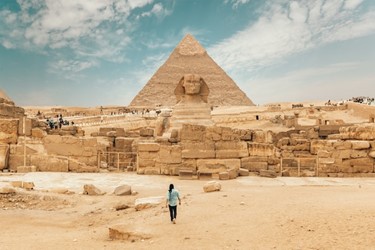Historical landmarks and World Heritage sites undoubtedly provide an experience of their own for travelers. Filled with timeless history, visitors entering these sites are immersed in a sensation filled with awe, curiosity, and wonder.
Christopher Precopia explores some of the greatest historical landmarks and World Heritage sites and how they make for a travel experience like no other.
Acropolis of Athens
Located in the heart of the Greek capital, the Acropolis is a marvel of its own. The ancient citadel was built in 447 BC and served as a religious center for the Greek people, with thousands flocking to the site to pray to their gods. The majestic Parthenon temple in the Acropolis was built and dedicated to Athena, goddess of wisdom and warrior, and protector of the city.
Travelers who visit the Acropolis marvel at the grandness of the structures and the ability of early humanity to create such structures without modern-day technology. In its time, the Acropolis survived nearly 25 centuries, enduring wars, invasions, and natural disasters, lending visitors a true path across time.
The Great Wall of China
Bearing the origins of one of the four oldest civilizations, the Great Wall of China is a feat of its own. At 21,196.18 kilometers (13,170.70 miles), this World Heritage site is magnificent in size and grandeur. Historians believe the walls were built around 770-476 BCE and 475-221 BCE, making them nearly 3,000 years old.
More than 10 million people from around the world visit the Great Wall of China per year to see this historic beauty. Visitors who come here get to walk the thousand-mile wall, experiencing the same view as the soldiers who once protected China during wartime.
Machu Picchu
Located in the Andres Mountains of Peru, Machu Picchu is a grand archaeological structure of the ancient Incans. While its exact purpose is still unknown, travelers still get to marvel at the grandness of the palaces, temples, and infrastructures when exploring the grounds.
The stone civilization of Machu Picchu is estimated to have been built around 1450 AD, a time when the ancient Incans had only access to simple tools. The ingenuity is fascinating – they only relied on the cut shapes of the rocks and stones to hold its structure, foregoing the use of mortar, a material used to hold stones together. Visitors from today can travel to Machu Picchu and walk in awe of the structure that still holds a mystery for modern-day archaeologists.

Memphis and its Necropolis
Memphis was a historic city for ancient Egypt, with over 3,000 years of history as the Old Kingdom’s capital. A trip to Memphis means a trip to the Necropolis, the large cemeteries spanning the region.
Egypt’s homage to the dead are the infamous pyramids and tombs and Memphis is a great place to see them. The Pyramid Fields from Giza to Dahsur are historic cultural sites for Egyptians, with visitors marveling at the grandness and intricacy of the tombs.
In Conclusion
Cultural and heritage sites play a large role in enriching the travel experiences for visitors. Each country holds a long, rich history as well as architectural structures that visitors today still get to marvel in awe about.
Reference Sources
- https://whc.unesco.org/en/list/404/
- https://www.britannica.com/topic/Great-Wall-of-China
- https://whc.unesco.org/en/list/274/
- https://everything-everywhere.com/memphis-and-its-necropolis-the-pyramid-fields-from-giza-to-dahshur-world-heritage-site/
